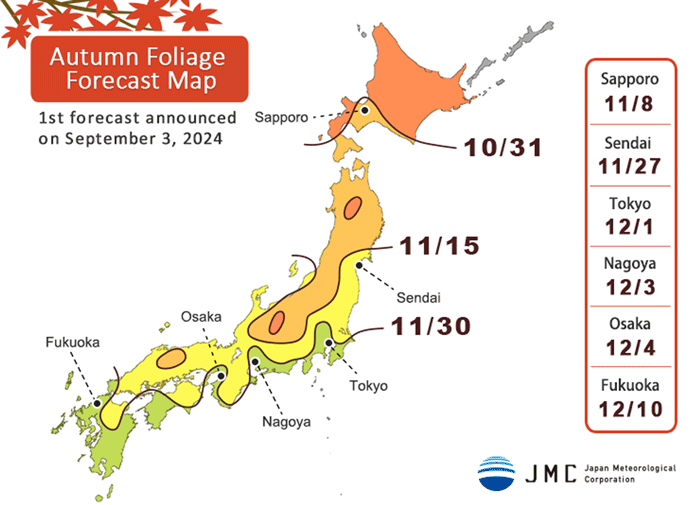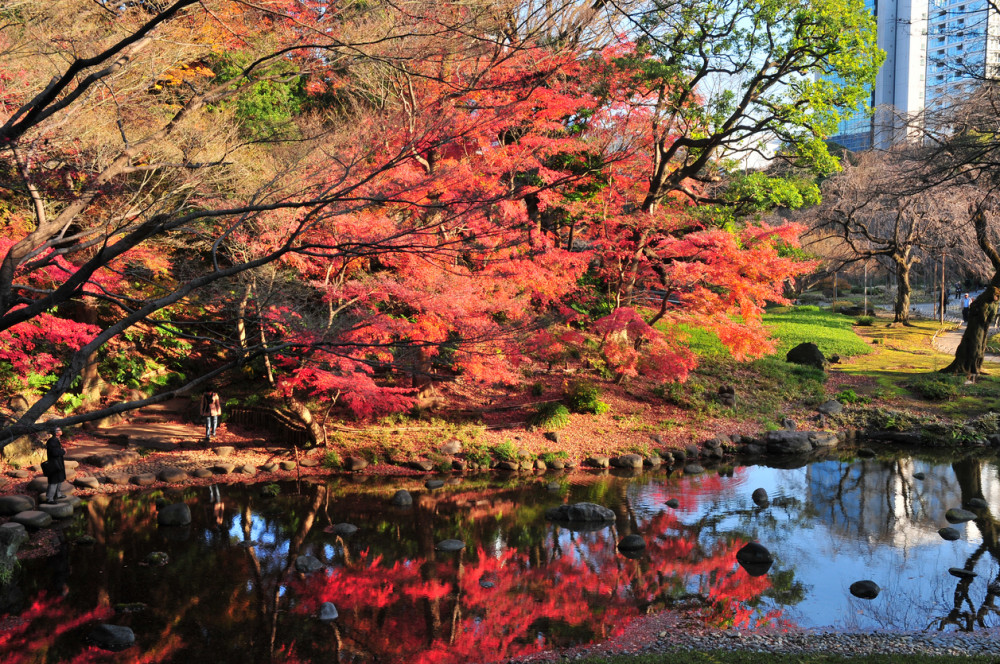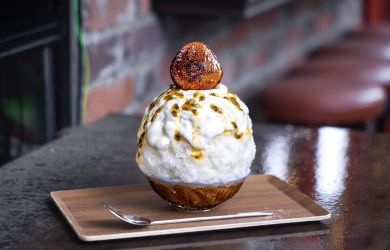
September 27, 2024
Tokyo Autumn Foliage 2024 Guide
Quiet and lesser-known spots in and around Tokyo
As the air cools and the green leaves of summer fade, fall foliage (koyo) spreads across the country and transforms Japan into a canvas of red, orange and yellow. The Japan Meteorological Corporation recently released its 2024 Autumn Foliage Forecast, indicating that we will see the peak of the autumn leaves from late November to mid-December. This is slightly later than usual due to warmer temperatures.


While popular spots like Rikugien Garden, Meiji Jingu Gaien and Shinjuku Gyoen are known for their picturesque scenes, they can become quite crowded in autumn. That’s why we’ve gathered all the information you need in this guide to quiet, lesser-known spots in Tokyo to admire trees such as Japanese maple and ginkgo, in peace.
Tokyo Metropolitan Teien Art Museum

The Tokyo Metropolitan Teien Art Museum offers a blend of art and nature in an elegant, historical environment. As the name implies, the museum has a Japanese garden (teien) with flowers, ponds and sculptures. The garden’s calm atmosphere complements the museum’s art exhibitions, creating a setting for visitors to appreciate both culture and nature.
Head to Meguro Station via the JR Line or Tokyu Meguro Line. The museum is a seven-minute walk from the station.
Expected best viewing period: December 1 – December 11
5-21-9 Shirokanedai, Minato-ku
Hours: 10am – 6pm
Admission: Free (the museum requires a ticket)
Kiyosumi Garden

Kiyosumi Garden surrounds a large pond that is home to koi as colorful as the surrounding autumn foliage. A notable feature of this historic garden is its roji—a stone path leading to The Ryotei Tea House. Open to the public, enjoy matcha tea and traditional Japanese sweets while admiring the garden’s autumn foliage.
The garden is a short walk from Kiyosumi-Shirakawa Station on the Hanzomon and Oedo subway lines.
Expected best viewing period: December 1 – December 5
3-3-9 Kiyosumi, Koto-ku
Hours: 9am – 5pm
Admission: ¥150
Zenpukujigawa Green Space and Wadabori Park

The Zenpukujigawa Green Space and Wadabori Park extend seamlessly into one another, both stretching along the Zenpukuji River. The two spacious areas are approximately 4.2 km long, which makes them a good option for an autumn stroll among the maple and ginkgo trees.
Take the Keio Inokashira Line to Nishi-Eifuku Station. From there, it’s about a 10-minute walk to the park entrance.
Expected best viewing period: December 2 – December 12
1-30-27 Narita Nishi, Suginami-ku
Hours: 24 hours open
Admission: Free
Koishikawa Korakuen Garden

At nearly 400 years old, Koishikawa Korakuen Garden is one of Tokyo’s oldest gardens. It blends Japanese and Chinese landscaping, with vibrant maple trees, stone bridges and peaceful ponds. The bridge offers stunning views of the red and yellow foliage reflecting in the water. While it’s one of the more popular spots, it’s much quieter than the larger parks.
Take the train to Iidabashi Station (JR Chuo Line, Tozai Line, Oedo Line) or Korakuen Station (Marunouchi and Namboku Lines). Both stations are around a 10-minute walk from the garden.
Expected best viewing period: November 30 – December 10
1-6-6 Koraku, Bunkyo-ku
Hours: 9am – 5pm
Admission: ¥300
Komazawa Olympic Park

The spacious Komazawa Olympic Park is home to several athletic facilities, including soccer and baseball fields, a swimming pool, tennis courts and jogging and cycling tracks. Built in 1964 for the Tokyo Olympics, it is now a space for athletes and park goers alike. Golden ginkgo trees line the wide pathways for joggers, dog walkers and families to admire.
The park is a 15-minute walk from Komazawa Daigaku Station (Tokyu-Denentoshi line).
Expected best viewing period: November 24 – December 5
1-1 Komazawa Park, Setagaya-ku
Hours: 24 hours open
Admission: Free
Want to explore more of Tokyo’s nature? Read about the city’s historical trees here.
Mukojima-Hyakkaen Garden

Smaller than Tokyo’s larger, more popular parks, Mukojima-Hyakkaen Garden offers an intimate and calm setting to view autumn foliage. This garden is the only flower garden surviving from the Edo period. Pass through a tunnel made of verdant Japanese clover to visit a beautiful koi pond.
Mukojima-Hyakkaen Garden is accessible from Higashi-Mukojima Station (Keisei Oshiage Line), which is about a five-minute walk from the garden.
Expected best viewing period: December 6 – December 14
3-18-3 Higashimukojima, Sumida-ku
Hours: 9am – 5pm
Admission: ¥150
Higo-Hosokawa Garden

Although often overlooked, this lovely garden’s landscape features natural springs, stone lanterns, bamboo fences, winding paths and koi ponds, all of which contribute to an idyllic atmosphere. The park is located along the Kanda River, where the scenic displays of reds, oranges and yellows stretch along the banks.
Access the garden by walking from Waseda Station (Tozai Line) or Edogawabashi Station (Yurakucho Line).
Expected best viewing period: November 30 – December 8
1-1-22 Mejirodai, Bunkyo-ku
Hours: 9am – 5pm
Admission: Free







